
How to pair Catalpa?
6 inspiration ideas
Contents
Catalpa is one of the small trees rarely exceeding 15 m in height when mature. It features a rounded and spreading crown supported by a short trunk. The impressive heart-shaped leaves emerge late in spring, and in June and July, large clusters of flowers develop on the current year’s wood. The characteristic foliage of the catalpa makes it very decorative and popular among gardeners. In terms of cultivation, it thrives in rich, cool, and well-drained soil and easily withstands temperatures down to -20° C. Among the various catalpas grown in gardens, we can mention:
- the Catalpa bignonioides or Common Catalpa
- the very bright Catalpa bignonioides ‘Aurea’ or Golden Catalpa
- the Catalpa bignonioides ‘Nana’ or Ball Catalpa, a compact form reaching a height of 5 m with a spread of about 6 m
- the Catalpa erubescens ‘Purpurea’, with purple spring foliage
- the Catalpa speciosa ‘Pulverulenta’ or Elegant Catalpa, with cream-white speckled foliage
Whatever the species or varieties of catalpa you prefer, we offer you some ideas for flowerbeds and gardens where they can thrive for your utmost satisfaction!
In a simple and elegant garden
The naturally rounded silhouette of the Catalpa bignonioides ‘Nana’, or ball catalpa, makes it an excellent feature to highlight in an elegantly structured garden. A variety with a small growth habit (reaching a height of 5m with a similar spread), it adopts a compact habit, and its regularly arranged branches support its characteristic deciduous foliage above a massive trunk with grey-brown bark. As a sterile variety, this catalpa does not produce flowers. Pair it with Miscanthus, Hostas with soft green or variegated foliage, and large white flowers of Hydrangeas (Hydrangea macrophylla ‘Endless Summer The Bride’). Boxwoods (Buxus) trimmed into balls will provide persistent structure to the display, while beautiful clumps of white agapanthus—in pots if your climate does not allow for them to be grown in the ground—will brighten the whole arrangement with simplicity and elegance!
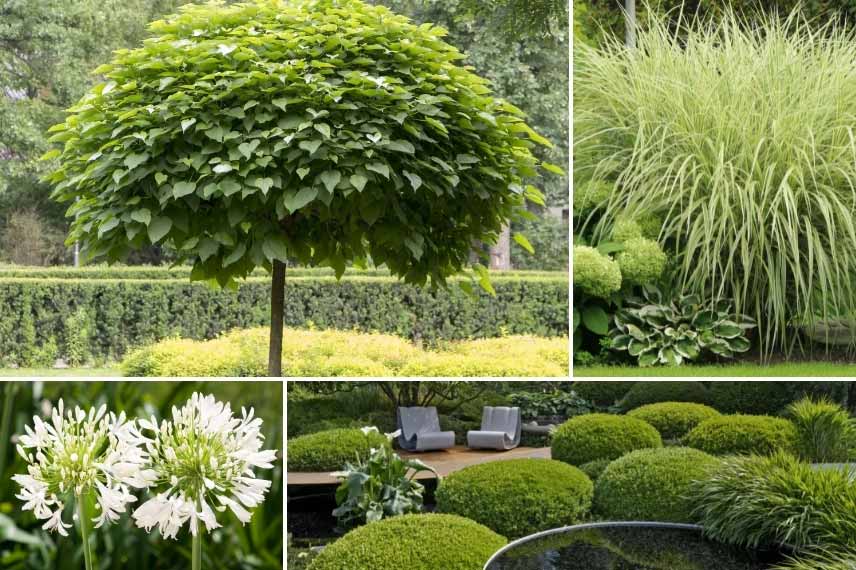
Catalpa bignonioides ‘Nana’, Miscanthus, Hostas and Hydrangea macrophylla ‘Endless Summer The Bride’, white agapanthus, garden with boxwoods trimmed into balls
Read also
Catalpa: planting, pruning and careIn a blue and gold flowerbed
The golden catalpa Catalpa bignonioides ‘Aurea’ is a charming small tree with very bright golden-yellow foliage. Reaching a height and width of about 10m at maturity, it will flower in summer, and its abundant flowers will be followed by pods resembling long green beans. If you wish to plant it at home, this could be an opportunity to create a lovely scene with contrasting colours. Plant the Wallflower Erysimum ‘Bowles Mauve’ in masses for easy and prolonged flowering from March to October, alongside Allium ‘Globemaster’, which blooms in May and June. The Euphorbia characias subsp. ‘Wulfenii’ with its green-yellow flowers will complement the golden hues of the catalpa. To temper the overall effect and add height, you can plant a hornbeam (Carpinus betulus ‘Lucas’) with its light green foliage and fastigiate habit.
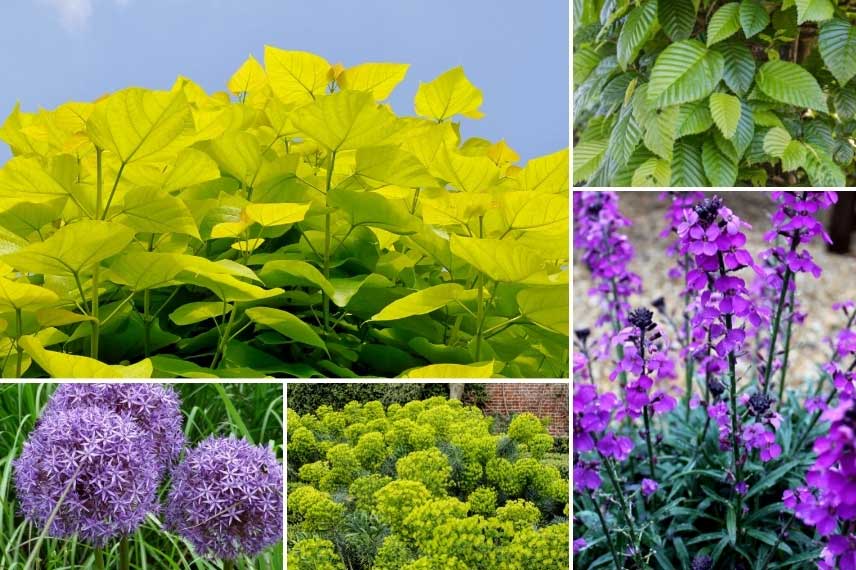
Clockwise: Catalpa bignonioides ‘Aurea’, Carpinus betulus ‘Lucas’, Erysimum ‘Bowles Mauve’, Euphorbia characias subsp. ‘Wulfenii’ and Allium ‘Globemaster’
Discover other Catalpa
View all →Available in 1 sizes
Available in 2 sizes
Available in 3 sizes
Available in 1 sizes
Available in 1 sizes
Available in 1 sizes
Available in 2 sizes
In a charming country garden
The catalpa fits into any size garden, from the largest to the smallest, as its growth remains moderate. This small tree brings an unmatched charm with its foliage and stunning white summer flowering. The dense and remarkably large foliage of the catalpa also makes it an impressive shade tree, ideal for planting by the terrace or near a small resting area in the garden. For a natural and rustic atmosphere, plant it in a large bed accompanied by deciduous and evergreen bushes with a simple appearance. Beautiful floriferous perennials such as:
- the Foxglove ‘Suttons Apricot’,
- the Musk chervil Myrrhis odorata,
- the Astrantias,
- the Paeonia lactiflora ‘Amabilis’, flowering in May
- and the iris pallida ‘Variegata’
will allow you to create cut flower arrangements. The magnificent rose David Austin ‘Desdemona’ will also find its place effortlessly in this garden.

Catalpa bignonioides, Foxglove ‘Suttons Apricot’, Myrrhis odorata, David Austin rose ‘Desdemona’, Astrantias, Paeonia lactiflora ‘Amabilis’, and iris pallida ‘Variegata’.
Read also
What to plant under a tree?In a modern garden playing with the contrast of foliage
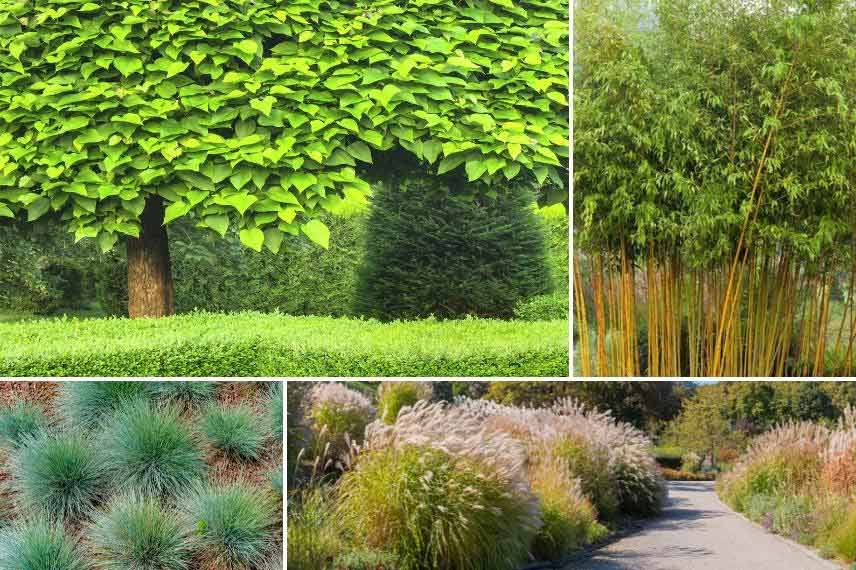
Catalpa bignonioides, Phyllostachys aureosulcata ‘Aureocaulis’, Festuca glauca and planting of Miscanthus and grasses in mass
In a lovely white garden
Perfect tree for a white garden, Catalpa blooms in summer in the form of large conical clusters. Deciduous with no particular requirements, it can be planted in many regions, provided that overly dry soils and strong winds are avoided. In this pure and monochrome setting, it can be paired in full sun or partial shade with white Dogwoods Cornus alba Sibirica ‘Variegata’, with Lupins ‘La Demoiselle’, and the sumptuous Aralia elata ‘Golden Umbrella’ with its spreading branches and cream variegated foliage. The white foliage and flowers of these plants will create a soft and very pleasant plant harmony.

White garden atmosphere, flowers of Catalpa bignonioides, Cornus alba Sibirica ‘Variegata’ and Lupins ‘La Demoiselle’
In a bush bed for a combination of foliage and flowers
In a large bed of ornamental bushes, ample space should be reserved for the Catalpa erubescens ‘Purpurea’, with its purple spring foliage. It will spread to 10m with a similar height. Its lovely summer flowering will enliven this space, alongside the Japanese Dogwood Cornus kousa, which will have bloomed a little earlier in the season alongside the essential Lilac. The Salix exigua, or Coyote Willow, one of the most beautiful bushes with grey foliage, will temper the colours of the various leaves and flowers. In full sun or partial shade, in humus-bearing soil, these perfectly hardy bushes will require little maintenance from gardeners.
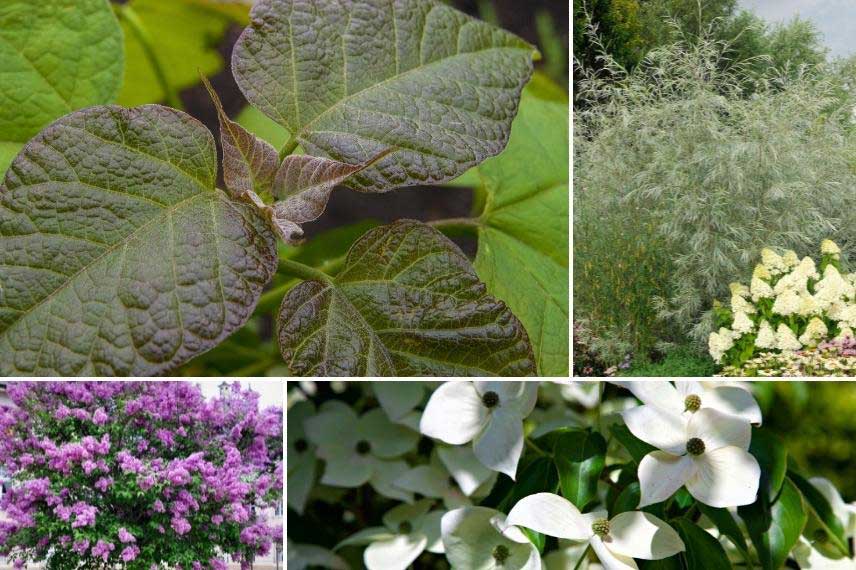
Catalpa erubescens ‘Purpurea’, Salix exigua, lilac and Cornus kousa
- Subscribe!
- Contents
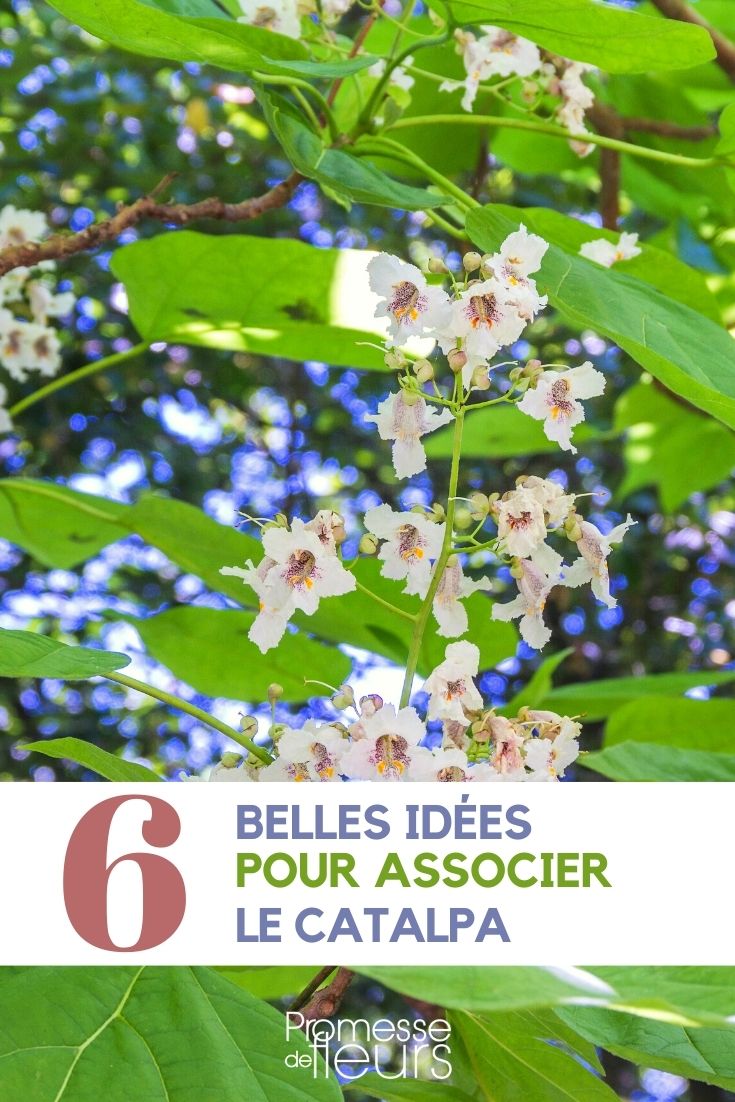































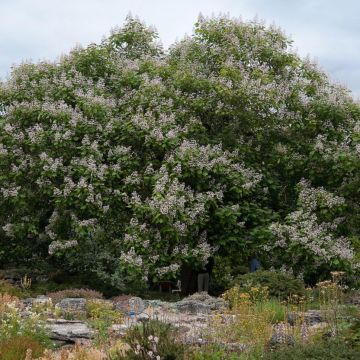
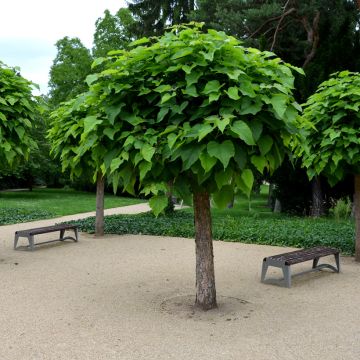
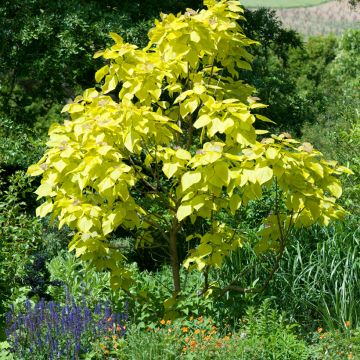
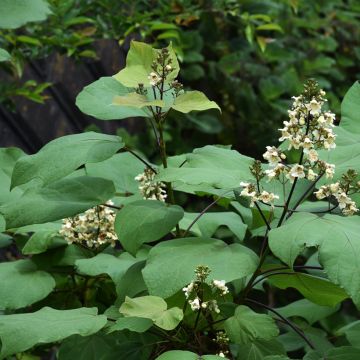
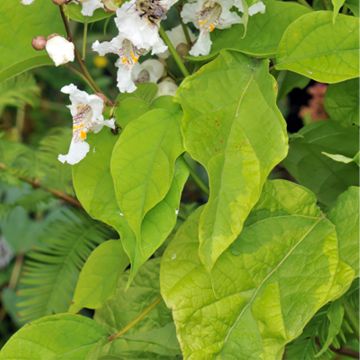
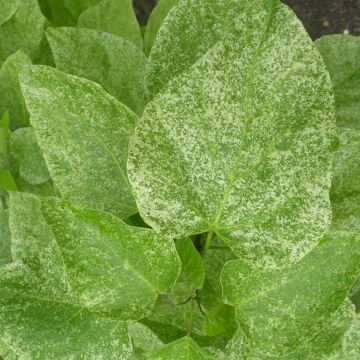
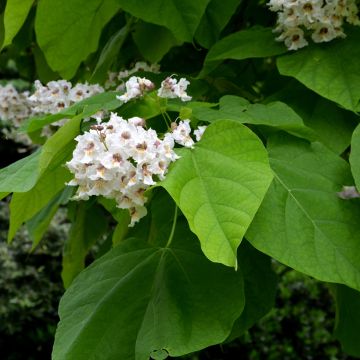
Comments